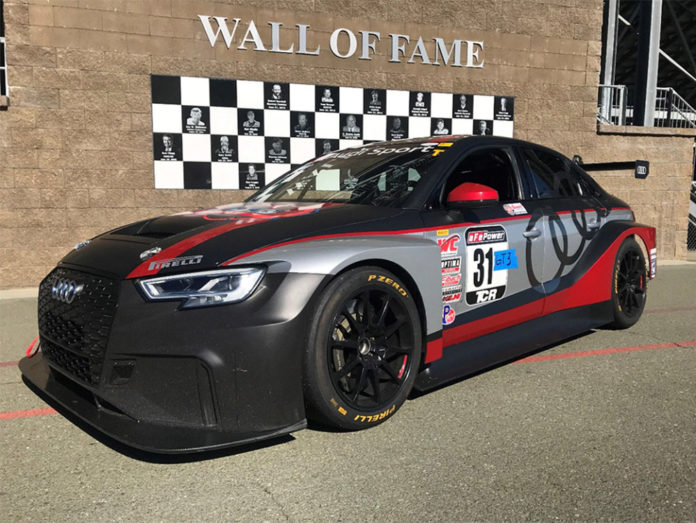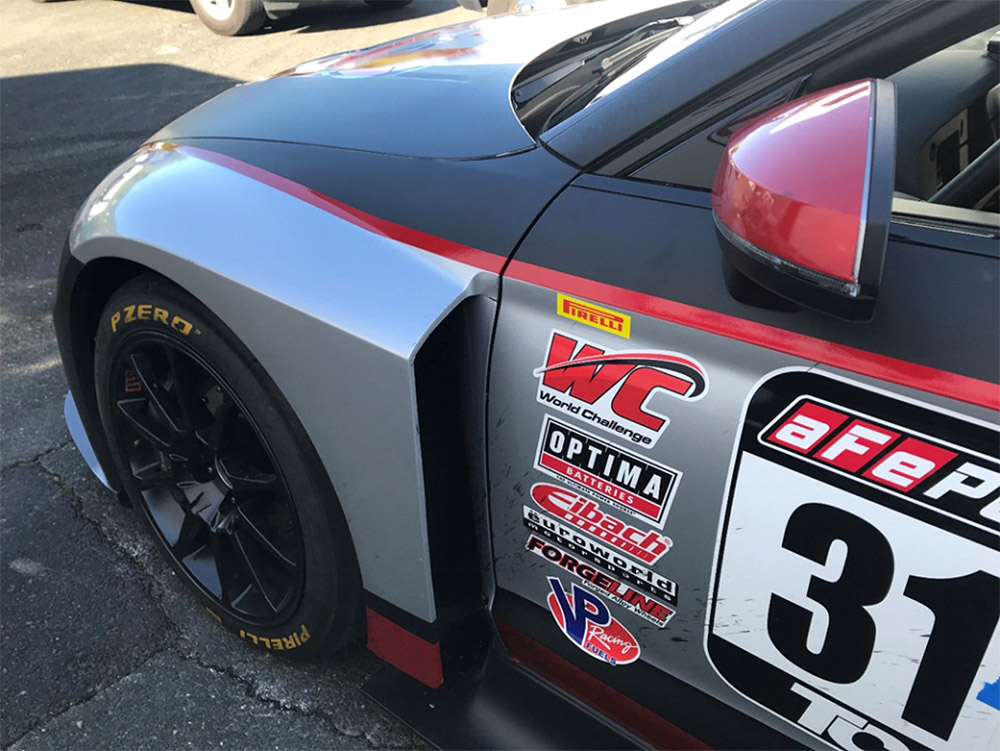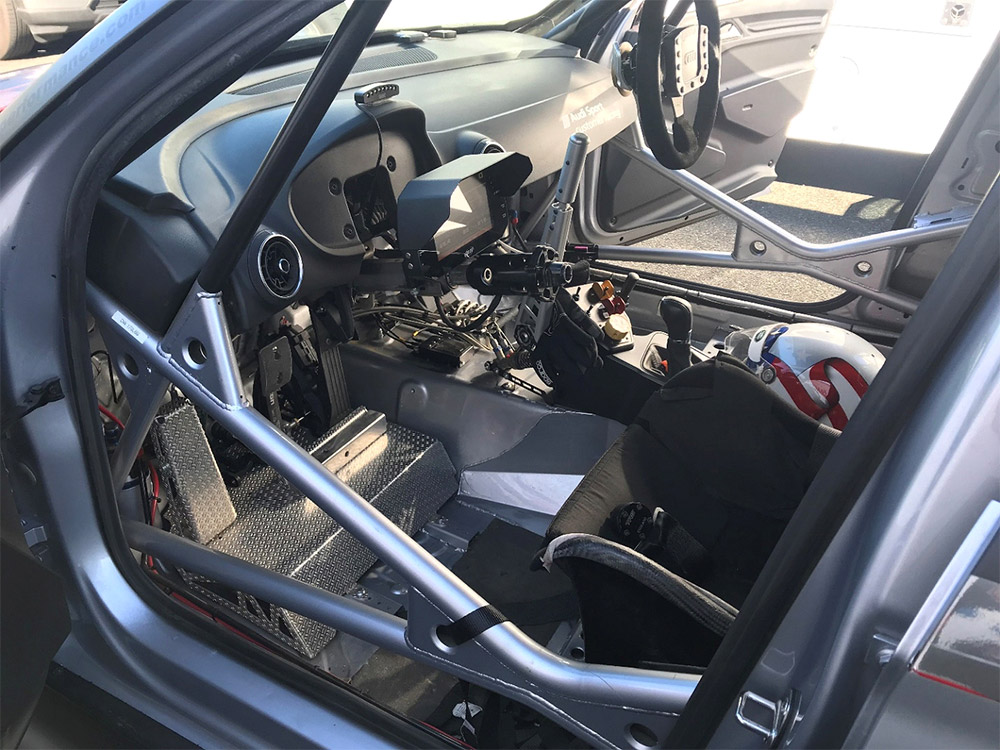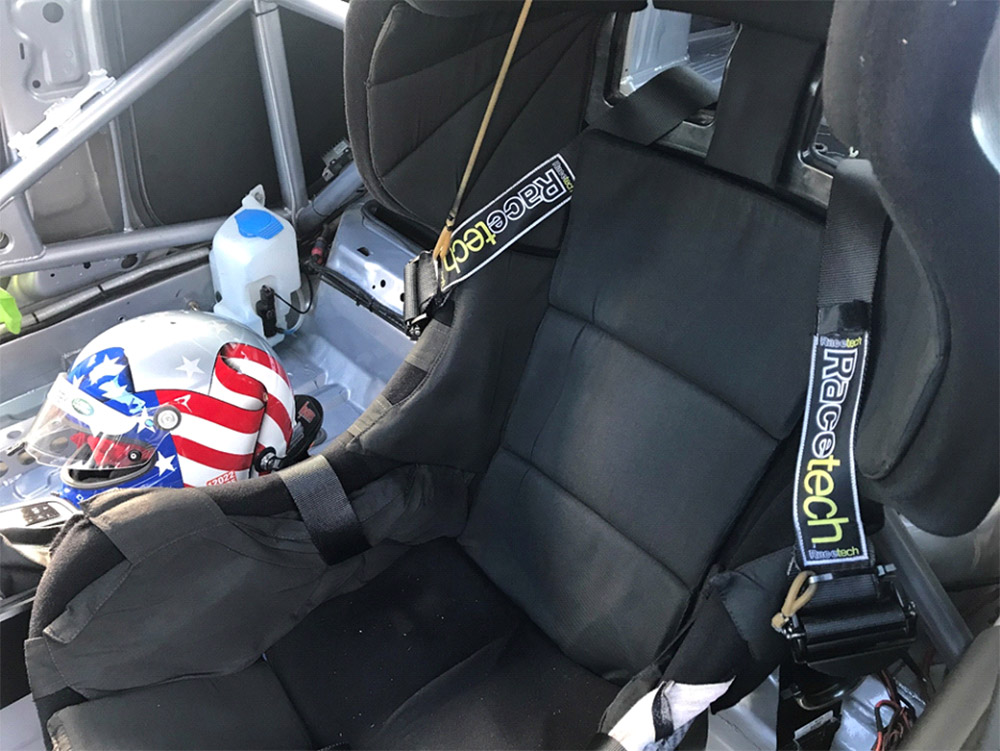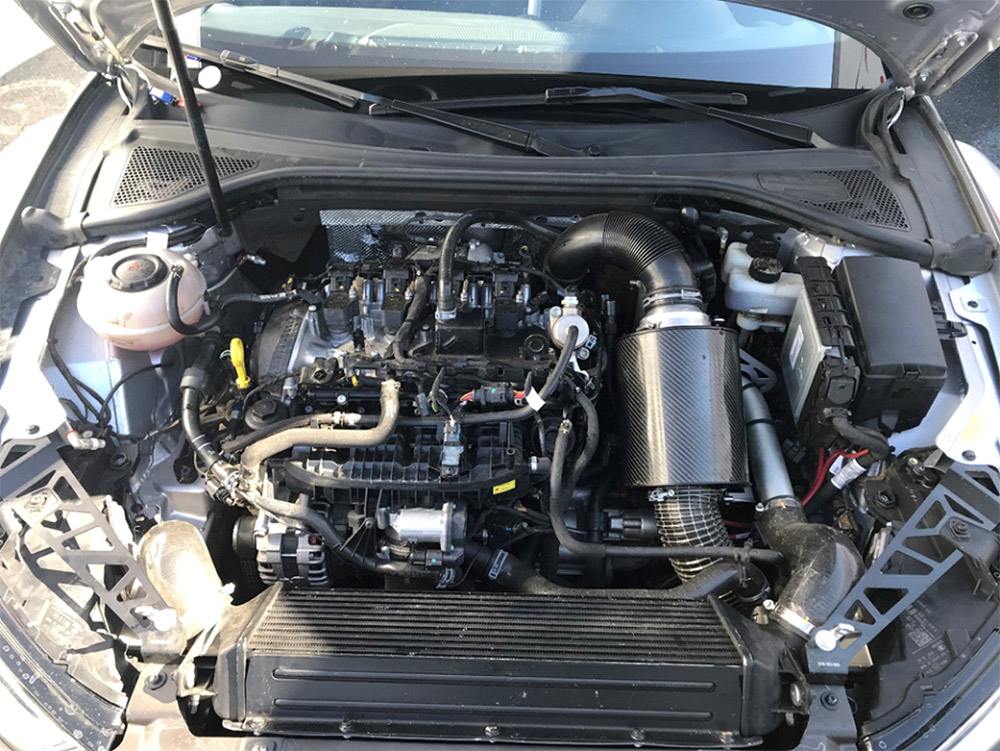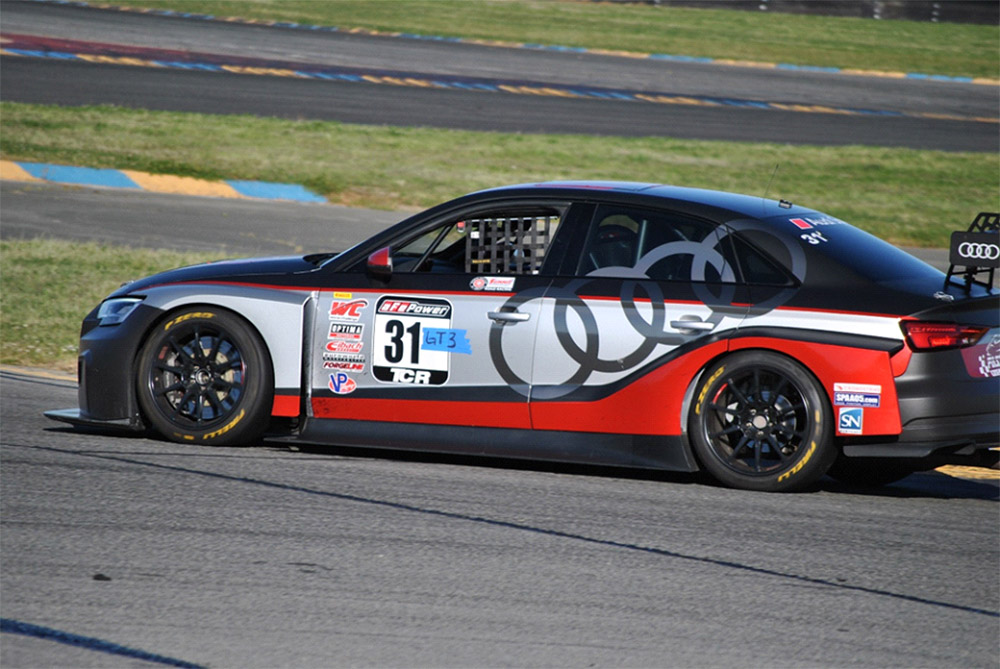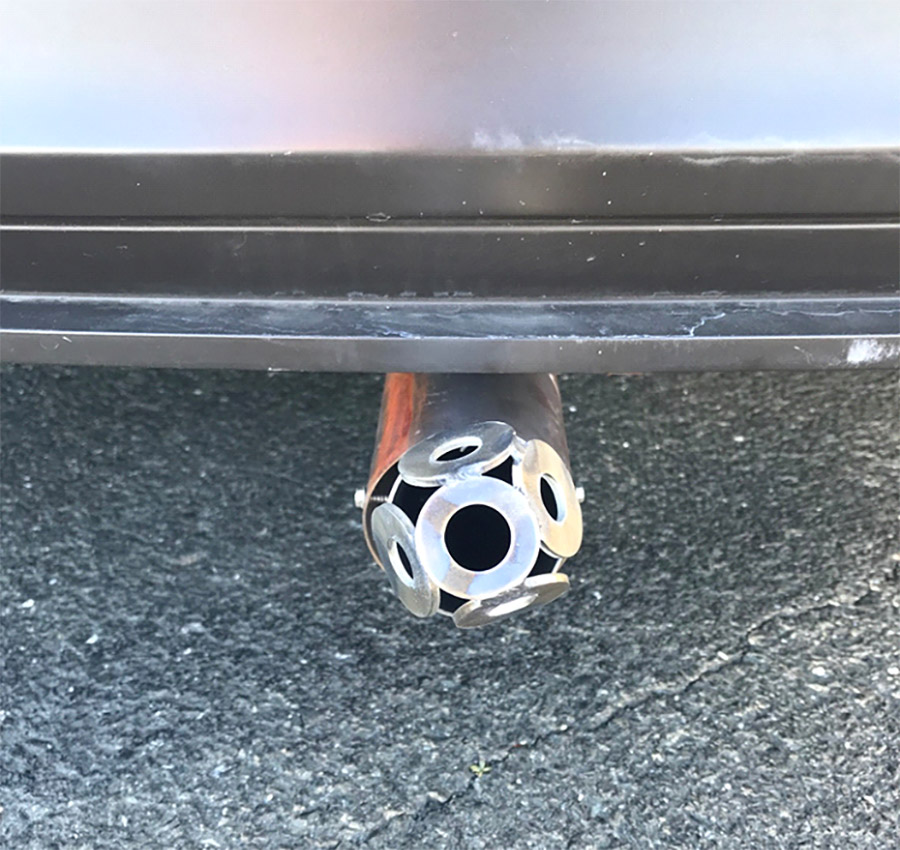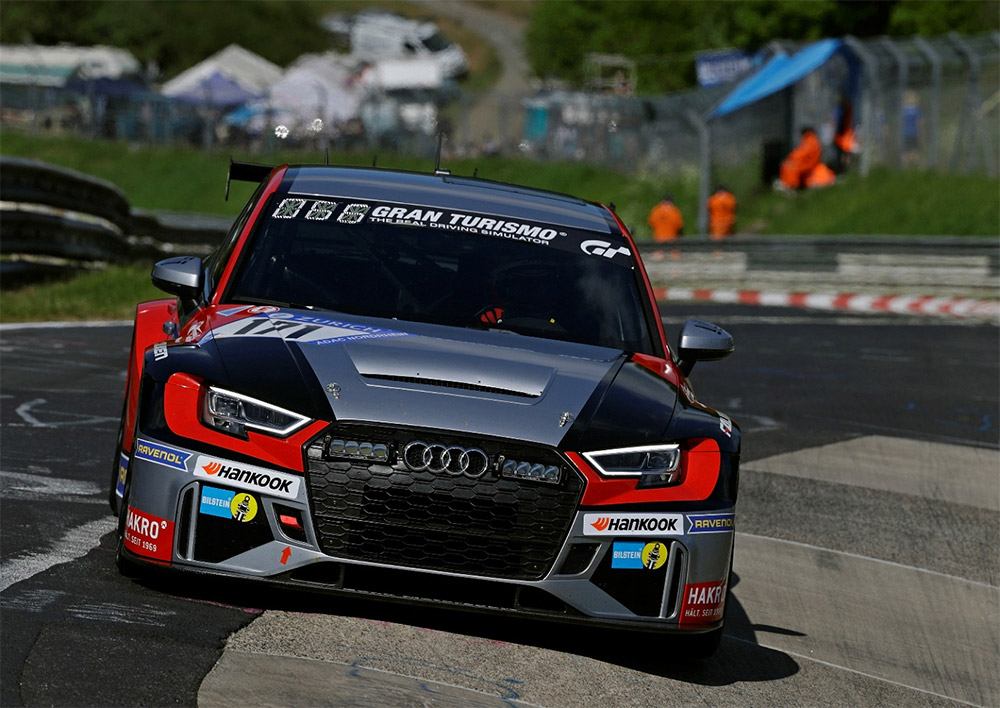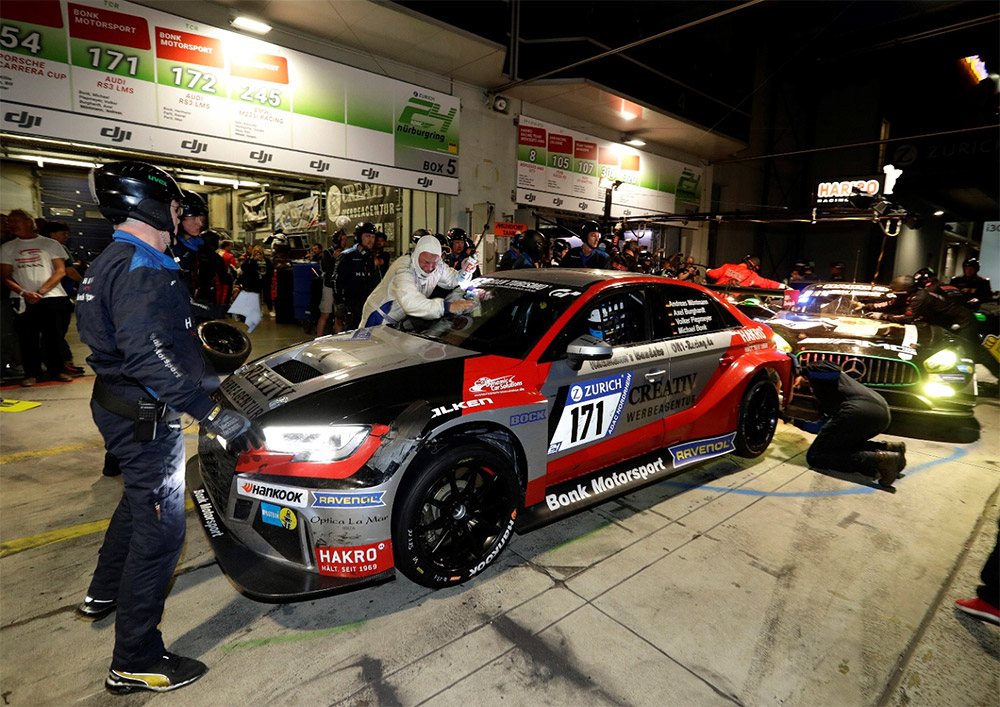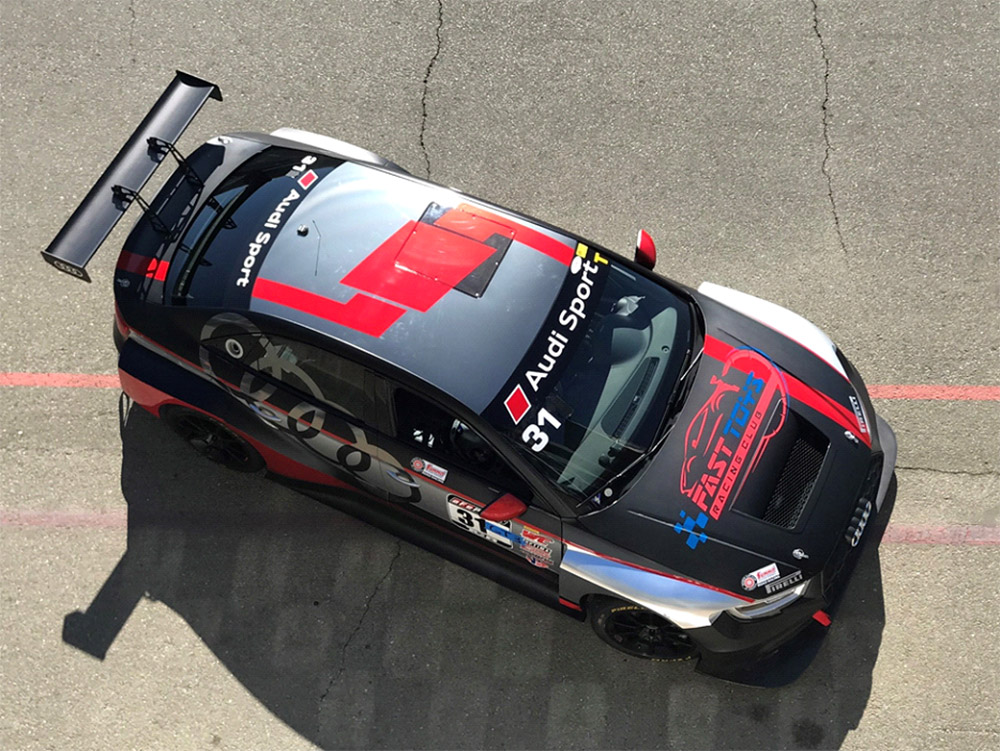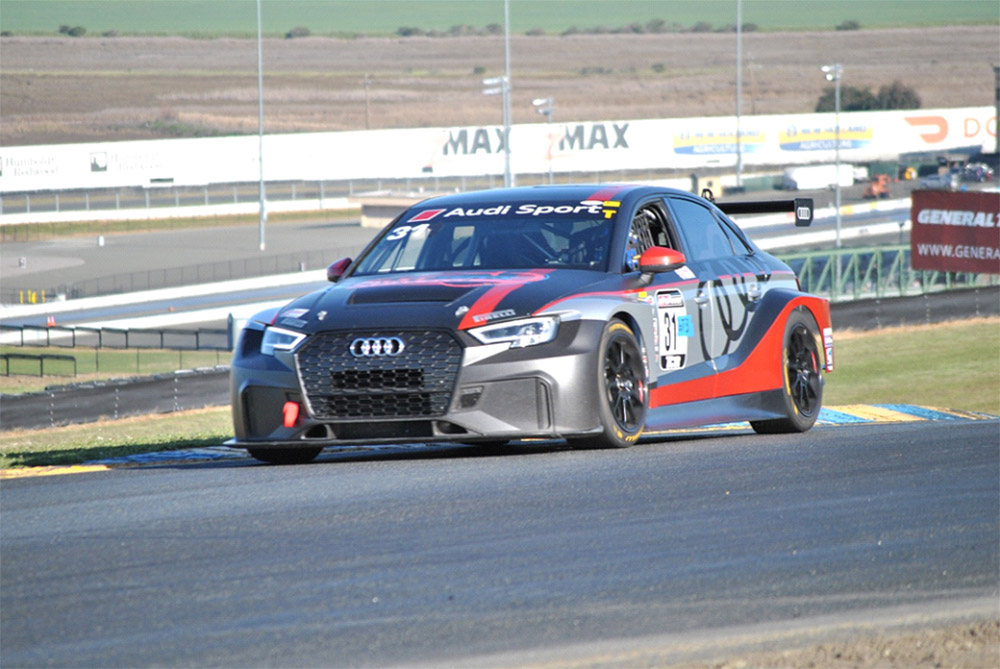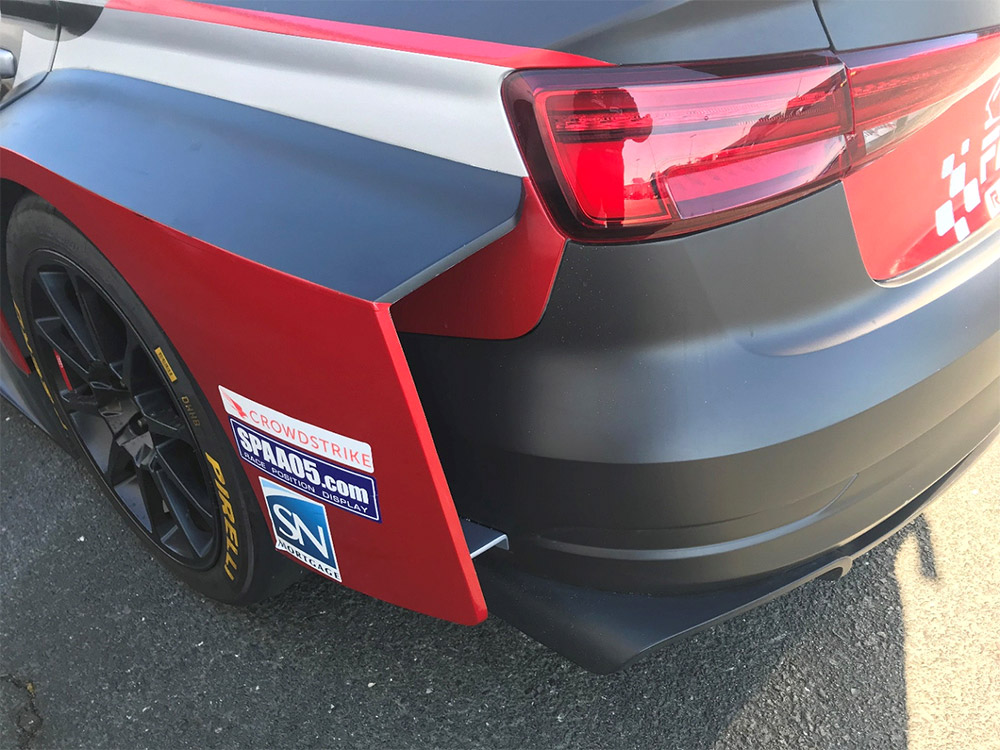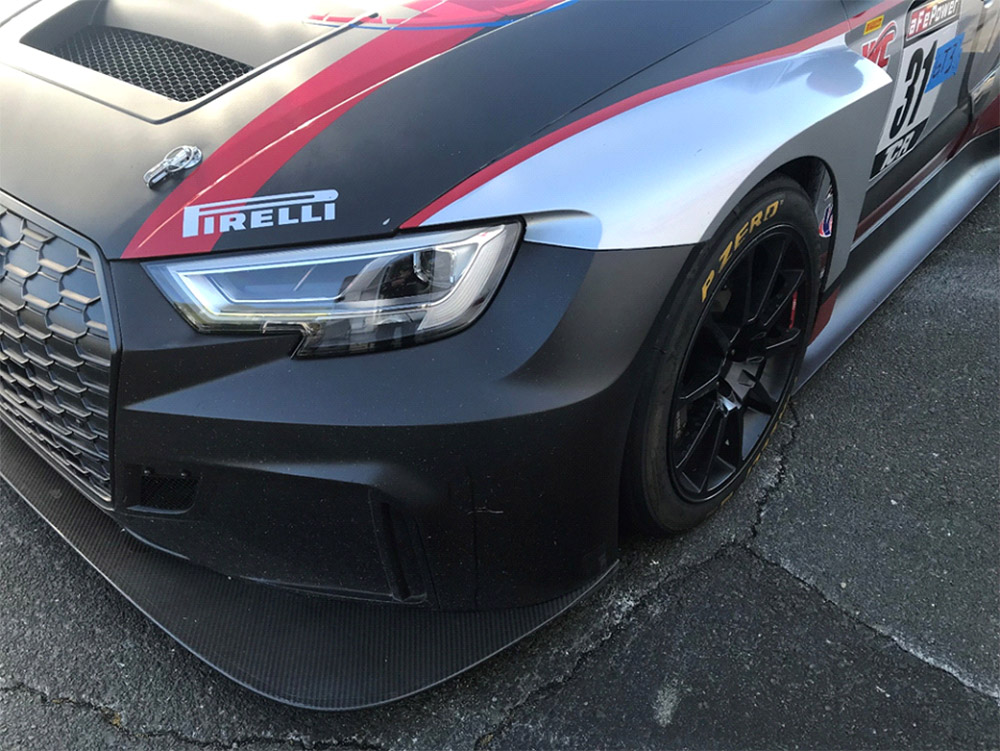It is worth paying attention any time Fast Toys Club welcomes a new arrival. In this case, the latest addition to their stable came with four rings. With the chance to log some miles at the wheel of a proper factory-built Audi RS 3 LMS touring car, Speed Journal Principal Jeff Francis was all in.
The Audi RS 3 LMS fits the formula for TCR racing – short for “Touring Car Racing.” TCR has been a motorsports success story for the past seven years. Racing is never easy on the budget, but the TCR formula has been a pathway for customers to run in IMSA’s Michelin (formerly Continental) Challenge series, World Challenge, the 24h Endurance Series, touring-car specific series around the world, and even the Nürburgring 24 hours.
The Audi RS 3 LMS traces its origins to the RS 3 road car. Audi styling and the four-door silhouette is unmistakable. Part of the appeal for manufacturers is to build cars that help the marketing cause. The race car features an aggressive aerodynamic nose treatment, flared bodywork around all four wheels and a wing perched atop the rear decklid. In an age where many high-performance road cars take styling inspiration from racing, the TCR Audi would not look too out of place in a supermarket parking lot if it shed its colorful livery and door number.
What better way to get a feel for the car than the challenging Sonoma Raceway during a San Francisco Region SCCA race weekend. Dicing with other competition cars at race speed adds a layer of adrenalin above and beyond lapping alone on an empty track.
The new arrival to the Fast Toys Club collection is a 2018 model – the first-generation RS 3 LMS. After selling dozens of cars over the years to customers, Audi released a second generation in 2021. The evolution may have improved the concept, but the first generation car remains a very capable expression of Audi racing spirit.
The specific RS 3 LMS did not bring any professional racing history with it. Instead, it was originally purchased for private track day use by an individual owner. The benefits of a car that hasn’t run a hard racing life of competition are obvious.
Any initial walk-around of a race car is special. Once at Sonoma Raceway, Francis got his first in-person look at the Audi. One might have expected a smaller and more compact car, but the Audi has a serious presence and is not diminutive in person. The car squats low to the ground, visually blending minimal ride height and aggressive bodywork.
Many worthy race car designers and builders build amazing track weapons but there is something about an institutional effort that brings decades of knowledge, technology, and heritage to customer racing. Race car details are everywhere in the Audi with a fit and finish that typically only comes from a manufacturer. The driver’s compartment reflects the extreme attention to detail and layout. The roll cage welds themselves are things of beauty and examples of fine craftsmanship.
The removable steering wheel with paddle shifts easily detached making entry easy (or relatively easy in race car terms). The seating position felt noticeably different than production-based race cars such as Mustangs, BMWs, and Porsches. The position was low and noticeably rearward for weight distribution. Instead of sitting upright, the angle almost felt like the seat was slightly reclining. The racing seat was bolted in tight and firmly held the driver in place.
Peripheral vision was somewhat limited due to the heavy head bolsters built into the seat. The rearward seating position puts the driver’s head even with the B-pillar. Learning to use the side mirrors was crucial. The rear view mirror showed a sightline through the roll cage and beneath the rear wing. The fuel cell was positioned for weight balance just behind the driver. No power assist on the brakes and no anti-lock braking, but the brakes required a firm foot and finesse to make them work effectively.
The fifteen-minute qualifying session was the first opportunity on track with the Audi. Ordinarily, a practice session would be ideal before putting a driver in a new car for a race weekend but this was more of a test opportunity than a competitive outing.
With the flick of a few switches and a push of the red button on the steering wheel, the motor instantly fired to life. The tall hand brake lever looked like something out of a drift car. Touring Car racing typically features standing starts. The hand brake holds the car until launching when the green flag flies.
The hand brake also helps to put heat into the rear slicks during warmup laps. The front wheel drive Audi requires a sympathetic touch on the warm-up lap to bring the rear tires up to temperature. Otherwise, the first corners can be a major balance challenge with sticky front tires that pin the nose to the pavement and cold rear tires that are inclined to slide.
Setting out on his qualifying laps, Francis attempted to use the paddles and manually shift gears, but the automatic transmission mode intervened. With other things to worry about, he let the Audi shift and turned his attention to his Audi crash course. As expected, the cool rear slicks broke free in the first corners. The Audi slid gradually and predictably and responded well to corrections.
With no traction control, mashing the throttle spun the front slicks easily. The turbo charged four-cylinder engine put out ample power, requiring a deft touch on the accelerator to hang on and avoid shredding the tires. The power band seemed best suited in the low to mid 5000 through upper 6000 RPM range. It is easy to believe Audi’s numbers showing that the lightweight RS 3 LMS will sprint from zero to 60mph in just 4.5 seconds.
The front wheels clawed at the asphalt for traction pulling the car down the track. A powerful front wheel drive car provides a very different sensation and requires different driving technique than a rear wheel drive car. Front wheels that both turn and propel a snarling beast asks a lot of the tiny tire patch that connects the car to the pavement. Throttle management exiting tight slow speed turns like turns seven and eleven was absolutely crucial to avoid front wheel drive understeer.
As the tires came up to temperature and driver adapted to what inputs the Audi needed, the car became more manageable and rewarding to pilot through the undulating twists and turns of Sonoma Raceway. The steering was ideal and didn’t take mental attention away from driving. In goldilocks terms, it was not too heavy and not too light.
Unexpectedly, a meatball flag waved from the start/finish flag stand in the Audi’s direction but there were no obvious signs of mechanical distress. Smoke in the car? No. Spilling oil? No. Perhaps a misbehaving transponder was logging bad qualifying times? When Francis pulled into pit lane, he was informed that the scream of the mighty Audi was louder than permitted sound levels. The award for such exuberance was banishment from the track until the Audi learned better aural manners.
As usual, Patrick Orozco was on-hand from Fast Toys Club and leapt into action. With no obvious solutions from parts in the trailer, he hit the nearby Sonoma garages. He soon found a willing and capable race shop, and returned with a funky baffle made of welded washers to fit in the tail pipe. Once installed, race officials permitted a hardship lap to reset a sound reading. Patrick’s improvised solution passed muster and the Audi regained its chance to run in the afternoon race.
Touring cars may not get the road racing spotlight, but they have been a big part of motorsport for decades. The eyes of motorsport were glued to British Touring Car racing in the mid-1990s. Factory support and strong privateer teams earned worldwide respect. All of a sudden, top-tier racing was not exclusive to open wheel and sportscars.
BMW, Ford, Mitsubishi, Nissan, Toyota, Vauxhall, and Alfa Romeo fueled the touring car fire. Audi joined later, bringing their quattro technology. All operated under regulations that tried valiantly to maintain a connection to family cars. As is the case with almost any series having direct manufacturer involvement, the urgency of competition led to spiraling costs. The glory days of touring car racing ended but the concept had been proven.
Since then, various series and regulations have promoted touring cars as a cost-effective motorsport option (or at least more cost-effective than other forms). A new touring car formula emerged in 2015 as a common platform that could be widely adopted across the globe. If customers can race the same cars in different series and different countries, manufacturers have a better business case to invest resources and find economies of scale.
While spiritually based on road-legal cars, modern touring cars are purpose-built race cars. They are built as racecars which gives them a more purposeful design and construction than modifying a car from the showroom floor. While the concept is to retain the road car link, building a race-car from the outset limits compromises.
It made sense to get a better understanding of the transmission ahead of the afternoon race. The automatic transmission is smooth but deprives the driver from controlling the timing of gear changes. With a bit of trial and error and consulting the handbook (remember, this is a new car to all involved), Francis successfully engaged manual paddle shifts by moving the gear shift lever as far back as possible and angled down diagonally. The six-speed DSG gearbox found third through fifth gears optimum for the natural terrain Sonoma Raceway road course.
Due to the sound violation, qualifying times were wiped out and the Audi started at the back of the pack for the thirty-minute race. As a test session, qualifying position wasn’t important but the competitive adrenalin still lurked just beneath the surface.
The warm up lap was utilized to heat up the tires, making sure to give special attention to the rears. As expected, the car oversteered on the first lap, but settled in nicely as the racing slicks warmed up. The earlier time spent to figure out the manual shift paid off. Manually shifting through the gears was a huge improvement and brought more confidence in the car.
Rather than fading, the brakes inspired more and more confidence as well. Left foot braking was natural and easier than moving the right foot back and forth between brake and throttle. Trail braking the Audi assisted rotation nicely around the turns. Lap after lap, the car became more comfortable and encouraged pushing harder as Francis climbed the learning curve.
As speeds increased, circuit familiarity was very beneficial as the low sight lines from the semi-reclined seating position became challenging, especially when cresting the blind turns of 2 and 3A. A rhythm and confidence eventually set in as the car and driver stopped wrestling each other and started dancing instead.
The quick Trans Am 2 cars found their way around the 2.52-mile Sonoma Raceway soon enough to lap the Audi toward the end of the race. If not careful, faster cars can materialize in the mirrors without warning. Visibility wasn’t quite as generous as some other production-based race cars, but trackside flaggers and regular mirror watching made managing faster lapping traffic manageable. The thirty-minute race was over far too quickly. The Audi did not exact a fatigue toll on the driver and a longer race would have been welcomed.
Driving a factory-built race car is more than enjoyable and rewarding – it feels special. The Audi is undoubtedly capable of keeping the throttle wide open in places where a brief test session left time on the table. More seat time certainly would build confidence, reduce lap times, and utilize more of the Audi’s potential.
Despite only a short time to shine, the Audi RS 3 LMS showed it was an amazing and rewarding car to drive. The clear jump from modified road car to purpose-built race car was evident at every turn. It is easy to see why the touring car formula and the Audi are attractive motorsport avenues. It is also easy to see why the Fast Toys Team added the Audi to their stable.
The Speed Journal would like to thank Fast Toys Club and the San Francisco Region SCCA.


